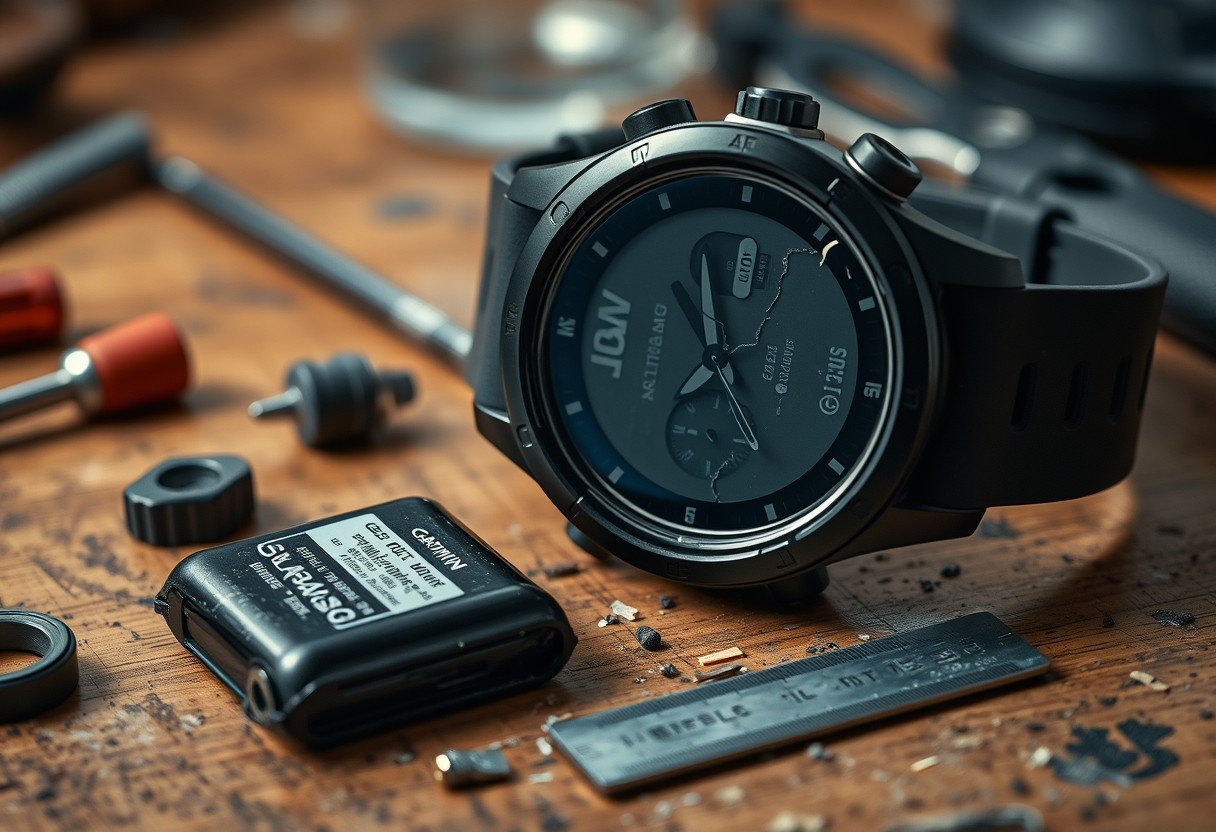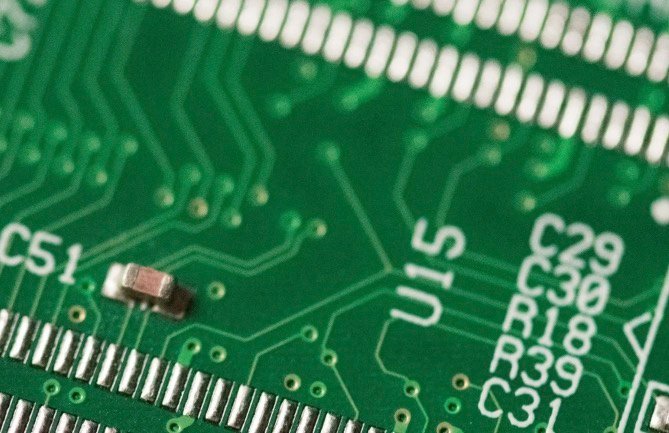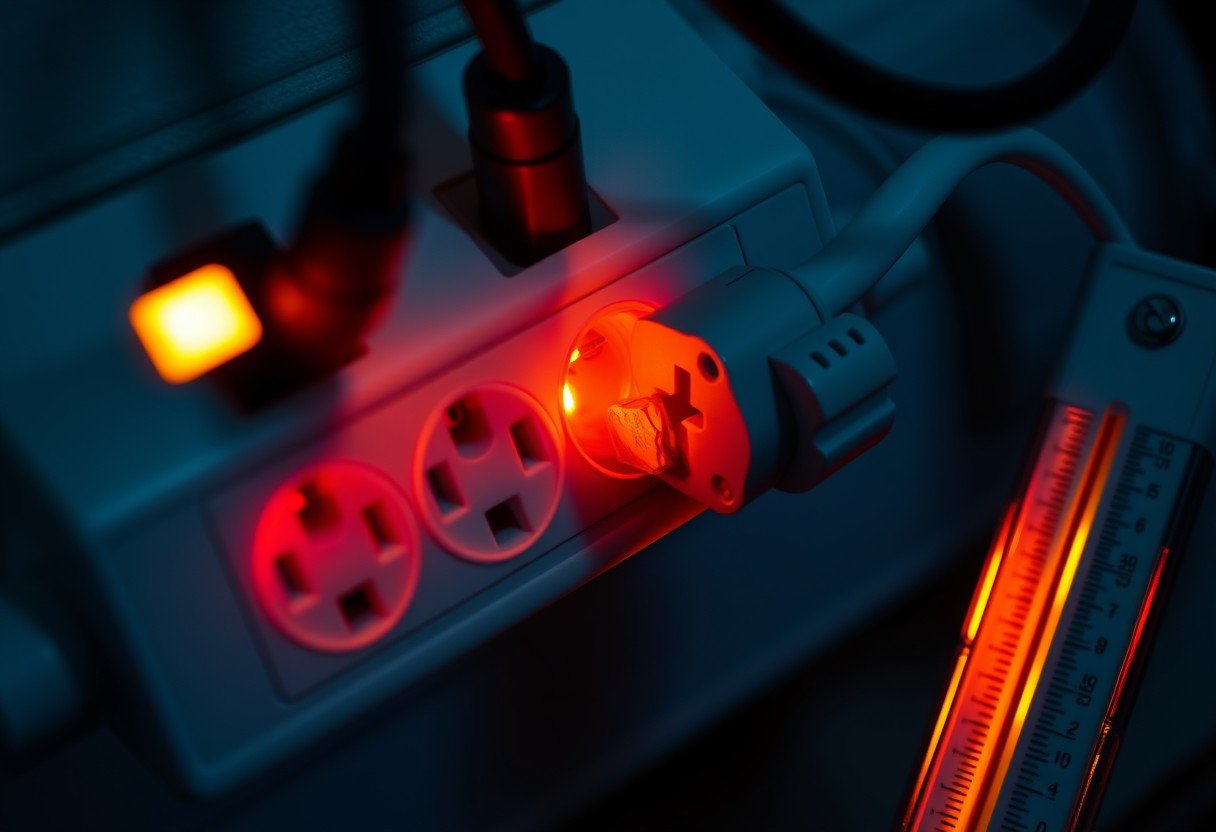It can be frustrating when your Garmin watch battery dies unexpectedly, especially when you rely on it for tracking workouts or navigating your day. Understanding why your watch’s battery life is short or why it has trouble charging is the first step to fixing the problem. This guide explains the common causes behind Garmin battery issues, from usage habits to software glitches, and provides simple, practical solutions to help you get your device’s performance back on track and ready for any adventure.
Identifying Common Garmin Watch Battery Problems
The battery is the heart of your Garmin watch, so when it starts acting up, it can disrupt your entire routine. Two of the most frequent complaints users have are a battery that drains too quickly and a watch that refuses to charge properly.
A watch that once lasted for days now barely makes it through an afternoon is a classic sign of short battery life. This is often caused by settings that consume a lot of power, like continuous GPS tracking, a high screen brightness, or too many notifications. Think of these features like apps running in the background on your phone; the more you have active, the faster the power drains.
Charging problems are another major headache. You might plug your watch in overnight only to find it dead in the morning. This could be due to a number of simple issues. The problem could be a dirty charging port, a damaged charging cable, or even a software bug that prevents the watch from recognizing the charger.
Why Your Garmin’s Battery Behaves the Way it Does
To get the most out of your watch, it helps to understand the technology powering it. Garmin watches use lithium-ion batteries, which are popular in electronics because they are lightweight and can hold a lot of energy. They are designed to handle hundreds of charge cycles while remaining efficient.
However, the performance of these batteries is not just about their design; it is heavily influenced by how you use your watch and the environment you are in. Certain features and conditions demand more power than others, which directly impacts how long your watch will last on a single charge.
Knowing which settings have the biggest impact can help you manage your battery life more effectively. For instance, using GPS is one of the most power-intensive functions on your watch.
| Feature or Factor | Impact on Battery Life |
|---|---|
| GPS Usage | High |
| Screen Brightness | High |
| Continuous Heart Rate Monitoring | Medium |
| Bluetooth Notifications | Medium |
| Extreme Cold or Heat | High |
Your daily habits also play a significant role. If you are someone who constantly uses GPS for long runs or keeps the screen on its brightest setting, you will naturally see the battery drain faster than someone who primarily uses it for telling time and receiving occasional notifications.
How to Diagnose Your Garmin’s Battery Health
If you suspect your battery is failing, you don’t have to guess. There are clear signs of battery wear that you can look for. The most obvious is a drastically reduced battery life, where a full charge doesn’t last nearly as long as it used to. Other symptoms include the watch shutting down unexpectedly even when it shows battery remaining, or taking much longer than usual to charge.
These signs often indicate that the battery is getting old and losing its ability to hold a full charge, which is a natural process for all rechargeable batteries over time.
Before concluding that the battery needs to be replaced, it is worth doing some basic troubleshooting to rule out other simple issues. Following a systematic approach can often solve the problem without needing professional help.
- Clean the Charging Contacts: Use a soft, dry cloth or a pencil eraser to gently clean the metal contacts on both the watch and the charging cable. Debris and sweat can build up and prevent a solid connection.
- Try a Different Power Source: Plug the charging cable into a different USB port on a computer or use a different wall adapter. This helps determine if the issue is with your power source.
- Perform a Soft Reset: On most Garmin models, you can perform a soft reset by holding down the power button until the watch turns off and then turning it back on. This can often resolve software glitches that affect charging or battery drain.
- Update the Software: Connect your watch to Garmin Express or the Garmin Connect app to ensure its software is up to date. Updates frequently include battery performance optimizations.
Simple Tips to Extend Your Garmin’s Battery Life
You can significantly improve your watch’s battery performance by making a few simple adjustments to your settings and habits. These maintenance tips help conserve power and reduce strain on the battery, leading to a longer overall lifespan for your device.
Proper charging is one of the most important aspects of battery maintenance. Always try to use the original charging cable that came with your watch, as third-party chargers may not deliver power correctly. It is also a good practice to avoid letting the battery drain completely to zero or leaving it on the charger for extended periods after it has reached 100%. Charging it when it drops to around 20% is ideal.
Beyond charging, managing your watch’s features can make a huge difference. By being mindful of what is running, you can ensure your battery is only used for the functions you truly need.
- Lower the Screen Brightness: The display is one of the biggest power consumers. Lowering the brightness or reducing the screen timeout duration can save a lot of energy.
- Manage Notifications: Turn off notifications from non-essential apps. Every time your watch vibrates and lights up the screen, it uses battery power.
- Use Battery Saver Modes: Most Garmin watches have a battery-saving mode that disables certain features to extend battery life. This is especially useful during long activities or when you are low on power.
- Turn Off Unused Sensors: If you are not actively tracking an activity, turn off features like GPS and Bluetooth to prevent them from draining the battery in the background.
When and How to Replace Your Garmin Watch Battery
If you have tried all the troubleshooting tips and your battery life is still poor, it might be time to consider a replacement. Over time, all lithium-ion batteries degrade and lose their capacity. Depending on your Garmin model and your technical comfort level, you have a couple of options.
Some users with experience in electronics choose to replace the battery themselves. You can find replacement kits and video tutorials online for many popular Garmin models. However, this approach carries risks. Attempting a DIY replacement could damage your watch and will almost certainly void your warranty if the device is still covered. This option is best suited for older, out-of-warranty watches where the risk is lower.
For most people, seeking professional help is the safer and more reliable choice. If your watch is still under warranty, you should always contact Garmin support first. They will handle the repair or replacement, often free of charge. Even if your watch is out of warranty, an authorized service center has the correct tools and expertise to replace the battery without damaging the watch’s delicate internal components and water-resistant seals.
Navigating Garmin’s Warranty and Support for Battery Issues
If you run into battery trouble, your first step should be to understand your warranty coverage. Garmin provides a standard manufacturer’s warranty that typically covers defects, including premature battery failure. You can easily check your warranty status on Garmin’s official website by entering your watch’s serial number.
Knowing whether your device is covered empowers you and clarifies your options before you spend money on repairs.
Contacting Garmin support is straightforward. They offer assistance through phone, email, and live chat on their website. When you reach out, be sure to have your watch’s model, serial number, and a clear description of the problem ready. This information will help the support team assist you much more efficiently. They can guide you through advanced troubleshooting steps or arrange for a repair if needed.
Frequently Asked Questions about Garmin Watch Battery Problems
What are the common signs that my Garmin watch battery is failing?
A: Common signs include a battery that drains very quickly, the watch not holding a charge for long, unexpected shutdowns even with battery left, or the device not turning on at all. Taking much longer to charge is another indicator.
How can I extend my Garmin watch battery life?
A: You can extend battery life by reducing screen brightness, disabling the always-on display, and turning off unnecessary notifications. Limiting the use of power-hungry features like GPS and ensuring your watch software is always updated will also help.
Is it possible to replace the battery in a Garmin watch myself?
A: While it is possible for some models, it is generally not recommended unless you are experienced with electronics. A DIY replacement is difficult, can damage the watch, and will void your warranty. It is safer to contact Garmin or an authorized service center.
What should I do if my Garmin watch won’t charge?
A: First, check the charging contacts on the watch and cable for any dirt or debris and clean them. Try using a different USB port or power adapter. If it still doesn’t charge, perform a soft reset on the watch or contact Garmin support.
How can temperature affect the battery life of my Garmin watch?
A: Extreme temperatures can significantly affect battery performance. Cold weather can cause the battery to drain faster, while high heat can damage the battery over time and reduce its overall lifespan. It is best to use and store your watch in moderate temperatures.









Leave a Comment